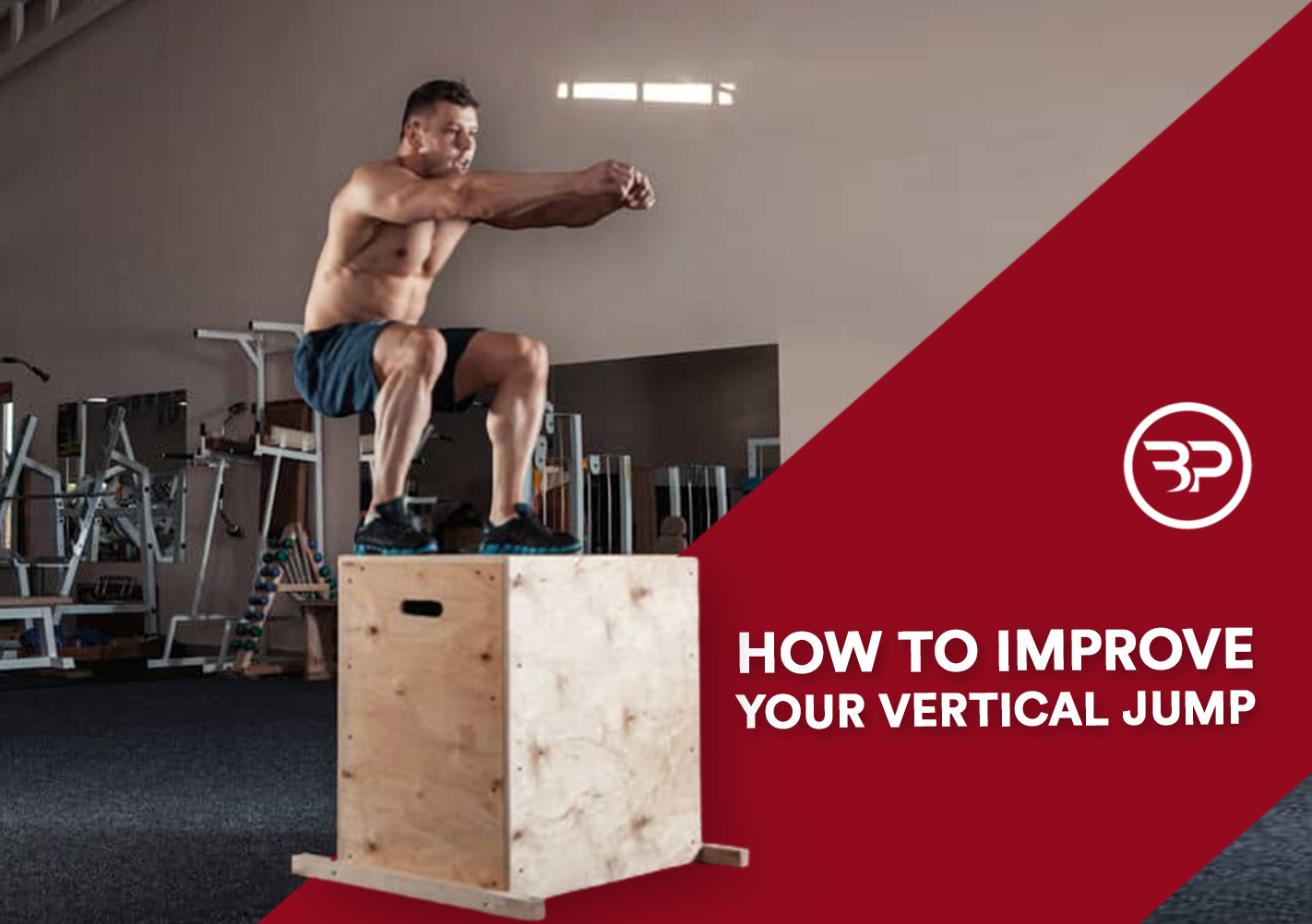How To Improve Your Vertical Jump
July 18, 2016
Regular readers know how much importance I attach to vertical jumping for both power development and overall athleticism. It can be one of the keys to upping your game for athletes of all ages and abilities.
Yet this important topic is much neglected.
That’s why I’m so pleased to present this extended guest post by Jakub Kalus of the Fitness Institut in Brno, Czech Republic. What follows is adapted from Jakub’s Czech language book “Jumper’s Guide,” now made available in English for the first time right here, right now. Over to you, Jakub.
– Eric Bach
Thanks, Eric. For far too long, too many people have attached too much importance to genetics in vertical jumping success. While genetics has its role, many other factors are also at play.
I’m here to tell you that vertical jumping is just another skill that can be improved through practice.
I have no magical solutions. But I can tell you that vertical jumping is easier to master than handstands or Olympic Lifting. You just need a plan — like the one I’m about to share.
It’s my hope that both athletes and their coaches can benefit from what follows.
Basketball and volleyball players who jump a lot in training and competition will naturally improve just by practicing their sport. But they — and everyone else who wants to improve their vertical jump — need to do more.
You just need to train the right way.
In this article, I’ll move from theory to practice to show you how.
Power Development
Power is defined as the amount of work a muscle can produce per unit of time. And you can actually improve your vertical jump more than your sprint speed. That’s because your feet are in contact with the ground for a much shorter time on sprints than jumps. You harness power and strength for your vertical jump takeoff.
I agree with Eric Bach that absolute strength is not everything. Relative strength is also important. Consider the example of an athlete with a bodyweight of 80 kg. (about 175 lbs.) who has a squat max of 125 kg. (about 275 lbs.) Would it help him if this athlete added 10 kg. (0r about 22 lbs.) to both his squat max and his body weight? The answer is no, because the relative strength would drop.
Olympic Lifting and The Vertical Jump
Olympic lifting can be hugely important in vertical jump development, provided you have mastered basic proficiency. These exercises are dynamic and use a large range of the triple extension movement (hip-knee-ankle) that can be transferred to jumping performance. The vast range of motion involves a lot of motor units which help us to exert more power. They also help to develop eccentric strength, which is crucial to our landing after jumps. Some people find it puzzling that so many weightlifters have such tremendous vertical jump ability. But they shouldn’t. After all, Olympic weightlifters use their strength quickly.
So how do we develop the strength? Get under the barbell! And spend a lot of time there!
The vertical jump of powerlifters can be also tremendous, because they have a lot of strength. But they are commonly strong only in the static jump, when they can apply the strength of their limbs. They can have difficulties in jumping while moving or changing direction.Don’t be afraid to add some variety to your training. You should include dumbbells, kettlebells, bands, chains and other useful stuff. This way is not the easiest, but it will pay off. So include primarily complex exercises such as:
- Squats – front squats are considered as a better option for developing the vertical jump, but back or goblet squats can be included in your plan too.
- Deadlifts – normal, Romanian, deficit, snatch
Followed by:
- Good Mornings
- Press – particularly push press, but bench press and military press also play their role in the training program
- Lunges – preferably reverse lunges
- Hip Thrusts
- Bulgarian Split Squats
- Kettlebell Arm Swings
- Medicine Ball Throws
The use of eccentric overload strength training also plays a role in development of the vertical jump by enhancing maximal muscle strength, particularly in advanced athletes.(2)
Rate of Force Development
Rate of force development is how much force can we exert in given amount of time.
(The more force in less time, the better)
0.7 seconds is the time that it takes an athlete to perform with maximal power. So consider two athletes with similar athleticism. Let’s say one of them is able to squat 200 lbs. (90 kg.) without time restriction, and also able to squat 155 lbs. (70 kg.) with the time restriction of 0.7 seconds. His vertical jump will be bigger than for someone who is also able to lift 200 lbs. without time restriction, but during 0.7 seconds, and is able to lift onlyb 100 lbs.
So the more power we are able to produce during short periods of time, the better.
But the power is still crucial here! If we take someone, who can squat 100 lbs for one rep, but with time restriction he is still able to push 90 % of his max, so 90 lbs. But because he is weak, he will not be able to transform this high percentage of power into jaw-dropping vertical jump. So it’s important to not only have some strength base, but also the ability to apply the force quickly.
Plyometrics (shock method):
Plyometric exercises rely on stretch-shortening cycle (SSC) Muscles undergo initial lengthening, followed by isometric contraction, followed by shortening This is the same principle as the lengthening of an elastic band before releasing in slingshot. Result: exerting power much greater than the power from the static position.
Stretch reflex also plays an important role in this type of training. Stretching of muscle is followed by quick contraction. In SSC-based movements, the eccentric force, reflex stimuli and elastic contribution is greater than normal, due to the eccentric load.
A Simple Test of Plyometric Ability
Compare your vertical jump while using SSC (do the countermovement jump) with a jump from a static position, in which you go down to the squat, position and stay there for 3-5 seconds before you jump. The difference between these jumps should be significant. Don’t forget to use the swing of your arms).
Tip: if the height of your jump from the static position is comparable with countermovement jump, you probably have:
- A) a lot of strength
B) a lack of plyometric ability
You should incorporate a lot of plyometric/jumping exercises to your routine. If the difference between those two jumps is significant, you have enough elastic power and should focus more on strength training..
Plyometric exercises should be included in the training plan if you want to maximise your vertical jump.
My opinion?
Too many coaches use too many of plyometric exercises, sets and repetitions.
These exercises can be highly beneficial. But they also place great demands on the nervous system. So use them in moderation and combine them with proper strength training. You should see amazing results in the height of your jump. Simple as that. (4)
Don’t Overdo It!
Basketball or volleyball players may execute hundreds or thousands of plyometric exercises (layups, dunks, spike jumps) weekly in training and competition. The most effective approach is to combine strength training and few plyometric exercises. Too many high volume plyometric exercises can be detrimental to performance. Ensure full recovery.
Movements should be powerful, but safe and technically correct. Avoid excessive repetitions. They may help with aerobic capacity, but suck for power development.
The ideal training for maximizing your vertical jump should be short and intense.
Depth Jumps
Eric’s Note: A very advanced and stressful method, depth jumps are also powerfully effective. My caveat: I wouldn’t advise depth jumps for anyone who’s not an elite athlete, and then only in 4-6 week cycles, max.
Depth jumps are among the most effective lower-body plyometric exercises. (3) In this exercise, the athlete must drop from a height before jumping up again. To fully engage our SSC the contact with the ground must be minimal, but long enough to exert the greatest amount of power you are capable of.
The eccentric portion of this exercise happens right after the landing, followed by concentric contraction used to jump. Elastic energy is accumulated during the landing, and then used to maximize the height of the jump.
The longer you stay on the ground, the less elastic energy you’ll have to use for jumping. (5)
The main purpose of this exercise is to increase the stretch load of the eccentric action. The velocity after the drop magnifies the eccentric load when we land. The depth jump is very demanding on your central nervous system.
You won’t feel exhausted during the exercise, you will not be covered with sweat, and will not try to catch your breath. But that doesn’t mean you are not getting fatigued.
This exercise can be modified by changing the height from where we drop, but we must keep in mind that the height of the box shouldn’t be detrimental to the height of our vertical jump. So if you jump considerably lower in depth jump than from squat jump, the height from where you’ve dropped is too high.
The better way is to gradually increase the height of the box from where you drop down,. When your vertical jump starts to lower, that would mean to stop another increase in the height of the box. When our jump starts to lower depends on our stretch-load tolerance
The higher the tolerance, the bigger height we can use for depth jump.
It’s beneficial to use different height boxes that don’t influence negatively your jump to try different effects of velocity, or length of ground contact.
For example:
You can do 5 sets of 2-3 depth jumps from 40 cm box with the focus on maximal height after take off. An anther day you can do 6 sets of 4 reps of depth jumps from 30 cm box where you try to emphasise the shortest time of ground contact.
Depth Jump Scores from Different Drop Heights
| Drop height | 20 cm | 30 cm | 40 cm (stop here!) | 50 cm |
| Vertical jump | 54 cm | 56 cm | 57 cm | 52 cm |
You can also alter vertical jump after landing with horizontal jump.
Minimizing the Length of Ground Contact
To emphasize the short contact of your feet with the ground, you can use exercises like jump rope, tuck jumps, hurdle hops, 4-star drill, bounding, or bounce depth jumps. When you try to get off the ground as quickly as possible: you can imagine that there is a hot lava on the ground! The more time you spend there before the take off, the more you will burn yourself.
The purpose of these exercises is to minimize the amortisation phase (the time you are on the ground after the land, before you jump, should be ideally lower than 0.2 s). This is crucial for performance in a lot of sports.
Athletes with higher percentage of type II fibers (fast-twitch fibers) benefit more from exercises with short ground contact and lower range of motion. On the other hand, athletes with more slow twitch fibers need more time to apply maximal force, so their amortisation phase can be longer and range of motion is enlarged.
Leanness
For maximal vertical jump, you should be lean. Shredded. Diced.
Excessive body mass drags you down. It a simple question of gravity!
Just look at the elite dunkers of NBA: Michael Jordan, Vince Carter, Aaron Gordon, Nate Robinson, you name it. All of them are exceptional athletes with minimum amount of body fat.
Lean doesn’t always mean skinny. You have to also have muscles to create power. If you train frequently (let’s say, you play basketball every day), lifestyle and nutrition changes might be more beneficial than adding physical activity that risk overtraining.
Coordination
Coordination jump drills and exercises that focus on ankle mobility and stability such as ankle hops, or quick lateral ankle hops, jump rope etc. should be also implemented to your workout routine,. there is room for lot of reps because these exercises are low impact and not so demanding on your neuromuscular system.
Landing
Landing technique training should also be implemented in the workout routine of any athlete. It should be the first thing you must learn before you want to train your vertical.
The landing should be smooth without excessive noise, the knees are stable and point forward, the absorption of landing forces should be effective (the more effective the absorption, the better will be the subsequent jump upwards), and you should simply stick to the ground without any excessive movement.
The best exercise to teach the smooth landing is called the drop jump.
It’s the same principle as depth jump, but you stay on the ground after the landing for few seconds. Try to stabilize your posture. After that, there is no subsequent vertical jump. The height of the drop jump is also crucial, If your form breaks down after the landing, and you are not able to utilize the cues from your coach, you should lower the height. You can make the drop jumps on both legs or single leg, because in real world of sports, lot of landing occurs on one leg.
Jumps With Additional Weight
Jump training with additional weight can be also implemented with moderation in an overall training plan. But keep in mind that this weight can alter our movement pattern. So this this type of training should not be the only type of jumping exercises we do.
Lateral Jumps
If you want to improve yourself or your athletes in jumping, you should also include lateral jumps. Why? Because in sports you don’t always jump directly forward (except of long jump), so any lateral jumps from one or two feet are beneficial in jump training.
Athletes gain stability in landing (crucial for almost every athlete – skiers, basketball players, football players etc.) and will be taught to generate a lot of power in lateral movement.
Here are some tips for lateral jumps:
- Lateral jump from two feet, leave from two feet and land to balanced position.
- Forward jump over a low hurdle into a maximum lateral jump
- Lateral jump from one feet, land on two feet and make a vertical jump forward to a box
- Lateral jump from one leg to another
Endurance Training, Agility, Speed Training.
Long-distance running can be detrimental to this training program, whose focus is to increase the vertical jump. There is a lot of enzymatic, hormonal and neuromuscular changes, which can be harmful to jumping and strength performance.
Don’t try to be focused only on the vertical jump, include also some agility and speed work. use cones, hurdles, different agility drills such as T-drill, L-drill, Illinois, or X-drill to improve your athleticism, and have fun.
PUTTING IT ALL TOGETHER
How do you put all this into practice? I’ll give just one example. Let’s consider the hypothetical case of a 17 year old male basketball player on a club or school team who is 6’2, weighs around 170 lbs, and is a fairly good athlete. He’s fast, coordinated, and can use the accumulated force effectively. But his coach told him that he must put on some weight and get stronger. He has some base of strength and knows the technique of basic lifts, so he is at the beginner/intermediate level. In order to increase his vertical jump, while simultaneously increasing strength, he would execute two demanding strength sessions in the gym weekly during the season. And he would do one session a week focused on vertical jump and plyometrics during his off-season.
Day 1: Strength Workout
| Goblet squat | 3 series | 10 reps | 1 minute rest between series |
| Back squat | 5 series | 5 reps | 2 minutes rest between series |
| Hip Thrusts | 4 series | 5 reps | 2 minutes rest between series |
| Glute Ham Raises | 3 series | 10 reps | 1 minute rest between series |
| Calf Raises | 3 series 3 series |
15 reps (lower resistance) 6 reps (higher resistance) |
1 minute rest between series
2 minutes rest between series |
Day 2: Workout oriented on jumping
| Jump Rope | 5 minutes (warm-up) | ||
| 4-star drill | 3 series | 8 reps (1 square is one rep) | 1 minute rest between series |
| Ankle hops with dorsiflexion | 3 series | 10 reps | 1 minute rest between series |
| Side-to-side jumps (both feet) | 4 series | 20 reps | 1 minute rest between series |
| Lateral jump (from one leg to another followed by box jump) | 3 series | 5 reps (5 reps for each leg) | 1 minute rest between series |
| Drop Jump | 3 series | 5 reps | 2-3 minutes |
| Depth Jump | 3 series | 3 reps | 2 minutes |
Day 3: Strength oriented workout
| Clean and Jerk | 4 series | 3 reps | 2 minute rest between series |
| Deadlift | 4 series | 5 reps | 2 minutes rest between series |
| Push Press | 4 series | 5 reps | 2 minutes rest between series |
| Rear Lunges | 3 series | 10 reps (5 reps for each leg) | 1 minute rest between series |
| Mountain Climbers | 3 series
|
20 reps (10 reps for each leg) | 1 minute rest between series |
Happy jumping! Please see the references below for further information. Please feel free to comment below or on my Facebook page if you have any questions.
 Jakub Kalus is a 22-year-old Personal Trainer, Strength and Conditioning Coach and Internet magazine editor from Brno, Czech Republic. He holds a bachelor’s degree in Biochemistry. Jakub has competed in natural bodybuilding and now manages a team of natural bodybuilders. In 2015, he published the first version of his book Jumper’s Guide, which focusses on improving the vertical jump. Check out Jakub’s Facebook page.
Jakub Kalus is a 22-year-old Personal Trainer, Strength and Conditioning Coach and Internet magazine editor from Brno, Czech Republic. He holds a bachelor’s degree in Biochemistry. Jakub has competed in natural bodybuilding and now manages a team of natural bodybuilders. In 2015, he published the first version of his book Jumper’s Guide, which focusses on improving the vertical jump. Check out Jakub’s Facebook page.
References:
1) CARLOCK, Jon M., Sarah L. SMITH, Michael J. HARTMAN, et al. The Relationship Between Vertical Jump Power Estimates and Weightlifting Ability: A Field-Test Approach. The Journal of Strength and Conditioning Research. 2004, 18(3), 534-. DOI: 10.1519/R-13213.1. ISSN 1064-8011. Dostupné také z: http://nsca.allenpress.com/nscaonline/?request=get-abstract
2) AAGAARD, Per. The Use of Eccentric Strength Training to Enhance Maximal Muscle Strength, Explosive Force (RDF) and Muscular Power – Consequences for Athletic Performance~!2009-07-05~!2009-11-01~!2010-04-29~!. The Open Sports Sciences Journal. 2010, 3(1), 52-55. DOI: 10.2174/1875399X01003010052. ISSN 1875399x. Dostupné také z: http://benthamscience.com/open/openaccess.php?tossj/articles/V003/52TOSSJ.htm
3) BOBBERT, Maarten F. Drop Jumping as a Training Method for Jumping Ability. Sports Medicine. 1990,9(1), 7-22. DOI: 10.2165/00007256-199009010-00002. ISSN 0112-1642. Dostupné také z: http://link.springer.com/10.2165/00007256-199009010-00002
4) MARKOVIC, G. a R. U NEWTON. Does plyometric training improve vertical jump height? A meta-analytical review * Commentary. DOI: 10.1136/bjsm.2007.035113. ISBN 10.1136/bjsm.2007.035113. Dostupné také z: http://bjsm.bmj.com/cgi/doi/10.1136/bjsm.2007.035113
5) ANDERSON, Frank C. a Marcus G. PANDY. Storage and utilization of elastic strain energy during jumping.Journal of Biomechanics. 1993, 26(12), 1413-1427. DOI: 10.1016/0021-9290(93)90092-S. ISSN 00219290. Dostupné také z: http://linkinghub.elsevier.com/retrieve/pii/002192909390092S









Amazing article Jakub. Where can we order your Jumper’s Guide, and is it also in ebook format?
One quick question. What do you think of contrast training (post-activation-potentiation -PAP)? Thus far, the research I’ve read about it is very positive. What is your personal opinion about it and how would you put it into practice. Would love to hear your opinion. Thanks 😉
[…] Improve YourVertical Jump via Bach […]
Amazing article, explains the benefits of how you could increase your vertical. Exercises like squats, deadlifts, leg presses, lunges, hip thrusts, kettlebell arm swing will help increase your vertical. If interested in more vertical jump products check it out here:
https://goo.gl/5uhUxS
Thanks for the amazing post! This really is what we need in increasing our vertivcal jump to the next level and help anyone become a pro.
The way this program is made truly makes it very reliable.
I personally started joining this program about 5 months ago and found it very useful, thanks to the vert shock program that is very helpful, literally anyone can dunk and jump better with this.
I’m sure that this will provide tremendous help to anyone having trouble in jumping so high and dunking. Try checking it out here: https://tinyurl.com/y9z5r7ar
Hey guys ,this is really good information http://bit.ly/2IrF68w
I googled vertical jump programs and spent a lot of money and time without a decent result
Then i’ve found a nice program that help me a lot and finally i’ve reached my goal
Here you can find more info about this program https://tinyurl.com/ya9cgpon
Great article, I use most of the tips mentioned there in my training to improve my vertical jump.
Even though I’m 6’8 (203 cm) and simple dunking is not that hard for me, I have always wanted to throw down a windmill, 360 or between the legs dunks but just couldn’t do it because my hang time was simply not there. I tried to find more information online which helped me just a little bit but it still wasn’t enough.
I started seeing significanty better results and added at least 4-5 inches to my vertical jump after I tried Adam Folker’s program and really dedicated almost every day to training. In a few weeks I was able to do a windmill and 360 dunk. I’m still training to perfect the between the legs dunk but I’m sure I’ll get there 🙂
If you are struggling the same way I was, you can checkout Adam’s training methods here – https://bit.ly/2IhJVAs
Great article Eric. The vertical jump can 100% be developed through practice. As an exercise professional I have seen this time & time again.
What are you’re thoughts on this for vertical jump training? https://bit.ly/2v1LHDR
Good Job Eric! This is a well written guide on how to improve your vertical jump!
Hey guys! I suggest you follow his training regiment, for an alternative training for people who does not have enough time to go to the gym or train you can check this program out https://bit.ly/2I21s0D
Great article Eric. The vertical jump can 100% be developed through practice. As an exercise professional I have seen this time & time again.
What are you’re thoughts on this for vertical jump training? https://bit.ly/2JuaVgE
Great article Jacob, glad i found this page some great information. Also if you want to improve your jumping ability you can try this 3 step product also https://bit.ly/2wlTHRLVertJump
Practice is essential .. Try and try again, higher and higher .. Beautiful !!! Really well done article .. Congratulations .. I found it really useful to integrate these exercises with an in-depth tutorial .. I’ll leave the link later .. https://bit.ly/35hGbM4
TRY US ????